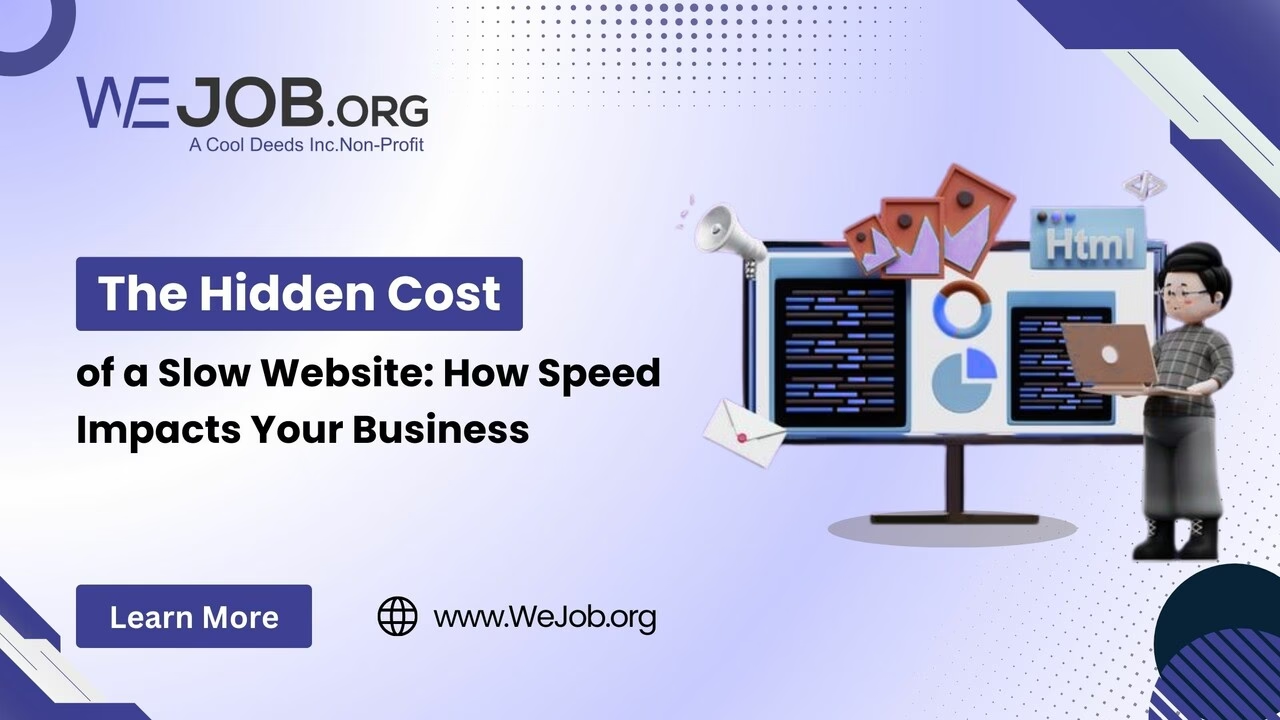Subtotal $0.00
In an instant-result world, every second your site takes to load can cost you traffic, sales, and search engine ranking. While business owners are busy with design and content, they tend to forget one of the most important performance metrics: website speed.
Slow websites aren’t just an irritation; they’re a virtual threat to your online growth, brand reputation, and SEO rankings.
How Slow Website Speed Hurts SEO and Your Business
Google and other search engines turn Page Experience into a ranking signal, and speed plays an important part. This is the way a slow site can silently damage your online business and revenue:
1. Core Web Vitals Penalties
Google’s Core Web Vitals (Largest Contentful Paint, First Input Delay, Cumulative Layout Shift) measure load speed, interactivity, and visual stability. Low results point to a bad user experience, causing lower rankings even when your content is fantastic.
2. Increased Bounce Rate
If the page is slow to load, visitors leave without interacting. Google presumes high bounce rates mean the page is unrelated to the user intent and leads to ranking losses.
3. Lower Crawl Efficiency
Googlebot allots a particular “crawl budget” to every website. When pages are slow to load, fewer pages are crawled and indexed per visit, which means it takes longer for new content to show up in search results.
4. Reduced Mobile Rankings
Google’s mobile-first indexing means your mobile site’s speed will impact rankings directly. Slowness on the mobile experience can damage visibility on mobile and desktop searches alike.
5. Poor Engagement Metrics
Time-on-page, pages-per-session, and repeat visits are all components of SEO signals. Slowing down discourages engagement, organically lowering ranking by association.
6. Weakened Paid Campaign ROI
While paid ad copy is not SEO, slow landing pages lower Google Ads Quality Scores, making campaigns larger in terms of cost and less effective. This indirectly impacts organic strategies by flushing budget that could have gone to SEO.
Business Impact Beyond SEO
A slow site is not only an SEO problem; it’s a killer of business growth. Even if your website is incredibly designed and has great content, sluggishness will ruin results in several ways:
1. Lost Conversions and Sales
People visiting your website don’t like to wait. If they must wait longer than 3 seconds for your page to load, then over half of them will abandon it and do nothing. That translates into fewer purchases, fewer inquiries, and fewer forms filled out. In online commerce, even a 1-second wait can result in a 7% decrease in conversions. Over the long term, this can add up to thousands, or even millions, of dollars lost.
2. Damage to Brand Perception
Your website is your digital storefront. Just as a messy, slow-moving cashier line in a physical store would frustrate customers, a slow-loading website sends a signal of inefficiency and lack of professionalism. Visitors start questioning whether your products or services will be just as slow or outdated, lowering trust before you’ve even made a pitch.
3. Poor Customer Retention
Even if they come to you once, a poor loading experience means they won’t be back. In a competitive industry, speed is customer service. If they can get results faster from another site, they’ll go there next time, cutting your customer lifetime value for good.
4. Wasted Marketing Spend
If you’re paying for Google Ads, Facebook Ads, or influencer marketing, sending traffic to a slow site is like pouring water into a leaky bucket. You’re still paying for the clicks, but you lose visitors before they convert. Worse yet, on platforms like Google Ads, slow landing pages hurt your Quality Score, meaning you pay more for the same clicks.
5. Competitive Disadvantage
Speed is a ranking and conversion factor for a reason, because users want it fast. If your competitor’s website loads in 2 seconds and yours takes 6, visitors won’t wait. They’ll click “Back” and go straight to the competition. Over time, your competitors gain more customers, more sales, and more authority, while your growth stalls.
6. Reduced Mobile Performance and Reach
With more than 60% of web traffic coming from mobile, speed issues hit mobile users the hardest. Slow loading over mobile networks can completely kill engagement, especially for customers browsing during commutes, in-store comparisons, or time-sensitive searches. This can shrink your market reach dramatically.
Advanced Solutions for Speed Optimization
Improving site speed requires a multi-step approach tailored to your business and technology stack:
- Image Optimization: Use next-gen formats like WebP, lazy-loading, and compression tools.
- Minify & Combine Files: Remove unnecessary characters from HTML, CSS, and JS, and combine files to reduce requests.
- Implement a CDN: Push content out via a Content Delivery Network to deliver more quickly to users around the globe.
- Server & Hosting Upgrade: Opt for SSD-hosting with good uptime and quick server response times.
- Database Optimization: Clean database overhead and unused data on a regular basis.
- Reduce HTTP Requests: Minimize the number of items (scripts, stylesheets, images) per page.
- Enable Browser Caching: Cache site assets locally for repeat visitors.
- Monitor & Test: Use tools like Google PageSpeed Insights, GTmetrix, or Lighthouse to track and improve scores.
Final Thoughts
A slow site can bring your business to its knees, damaging search rankings, wasting ad budgets, driving visitors crazy, and giving your customers away to competitors. Speed is no longer a nicety; it’s a must-have ranking and conversion metric.
If your site is sluggish, it’s time for a pro tune-up. WeJob.org is a speed optimization and full website solution expert, so your site loads quickly, ranks better, and retains visitors from the initial click.
Speed up your site, speed up your business. Book a free consultation with us today at WeJob.org/#book-an-appointment.

